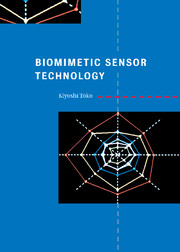7 - Other methods to measure taste
Published online by Cambridge University Press: 23 October 2009
Summary
Impedance measurement
A multichannel taste sensor using lipid/polymer membranes based on the measurement of electric potential responds to taste in a manner similar to a human gustatory sensation but with better reproducibility and higher resolution. The sensor output is similar for chemical substances producing similar taste qualities and is very different for those producing different types of taste. The taste sensor is effective in discriminating and quantifying the taste of foodstuffs such as coffee, beer, sake, mineral water and milk. The taste of amino acids was also quantified using the multichannel taste sensor. These results may provide an objective scale of human sensory expressions.
Whereas the taste sensor based on potentiometry can detect nonelectrolytes and weak electrolytes, the sensor outputs are smaller than those for strong electrolytes such as NaCl and HCl. This is because the electric potential response in lipid membranes of the taste sensor is dependent on changes of the surface potential produced by the diffuse electric double layer, and nonelectrolytes and weak electrolytes have very little effect on the electric double layer, even if they are bound to the membrane. In general, it is considered that physicochemical interactions such as binding to lipids affect the structure of lipid/polymer membranes. Consequently, it may be possible to detect such interactions by measuring changes in membrane impedance composed of electric resistance and electric capacitance. The studies described below involve measuring changes in the impedance of lipid/polymer membranes by the application of chemical substances which produce a taste.
- Type
- Chapter
- Information
- Biomimetic Sensor Technology , pp. 181 - 195Publisher: Cambridge University PressPrint publication year: 2000



